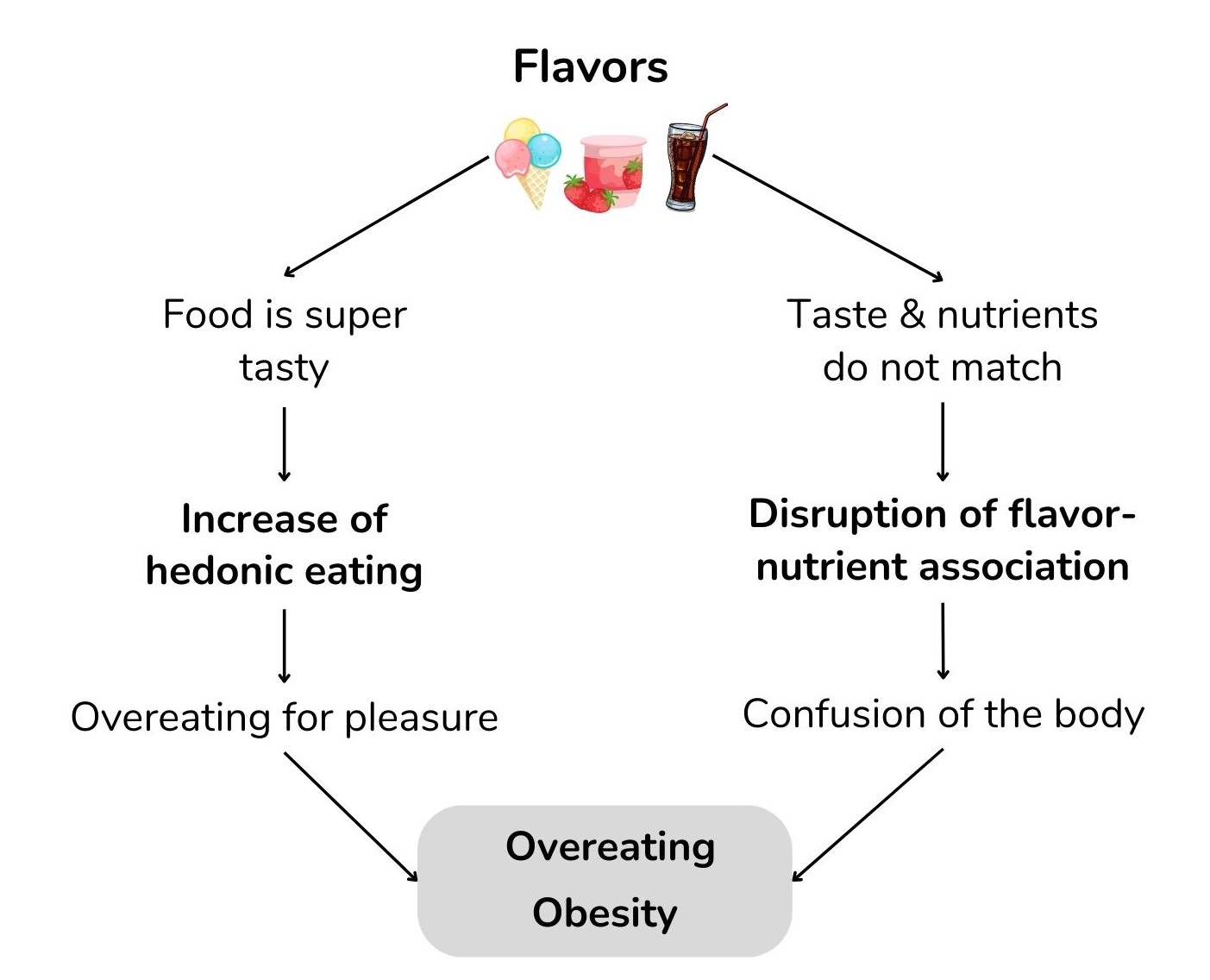
Major points:
- Flavors are added to foods during production to give them a unique taste and smell.
- Added flavors can lead to overeating because they make food super tasty and uncouple the taste from the actual nutritional composition.
- Added flavors are consistently avoided in Neatic.
What are added flavors?
Flavors are ingredients that are added to food during manufacturing. They can create a special taste and smell in food and even improve the taste.
How do added flavors cause overeating and obesity?
Added flavors create a delicious taste in food and make it irresistible. You eat more, even though your calorie requirement has long been met. This eating for pleasure is called hedonic eating.
Added flavors increase hedonic eating!
In addition, added flavors uncouple the taste of food from its nutrient content.
When consuming food, the body learns to link the taste of the food with the nutrients it contains. For example, when eating a strawberry ice cream made with real strawberries, the body learns to link the taste of the ice cream with the nutrients from the strawberry. When eating another strawberry ice cream, the body expects these nutrients based on the taste. If these nutrients are actually present in the ice cream, the body’s expectations are fulfilled and it can predict these nutrients better in the future.
However, with added flavors, the situation becomes confusing for the body. An ice cream with added strawberry flavor may contain few or no strawberries. In this situation, taste loses its predictive function for a particular nutrient composition. The body expects the typical strawberry nutrients because of the strawberry taste but they are not present. This confuses the body and makes it difficult to predict nutrients based on a specific taste in the future. Experts refer to this as a disruption of the flavor-nutrient association.
What happens in this confusing situation? You eat more. Whenever your body is confused that it is not receiving the nutrients it expects, it makes you eat more to prevent any potential deficiencies.
Added flavors disrupt the flavor-nutrient association!
This is not just theory: added flavors are used and marketed as animal feed additives due to their weight-increasing effects. The advertising promises that flavors increase the animals’ feed intake and body weight. Animal studies prove the scientific basis of these claims.
What does Neatic recommend concerning added flavors?
In Neatic, added flavors are consistently avoided due to their appetite and weight-increasing effects. The approach is summarized in Principle 1.
Principle No. 1
If the term “flavor” is found on the ingredient list, avoid these foods.
If you would like to know more about the use of flavors in food, click here.

Bibliography:
European Union (2008): Regulation (EC) No 1334/2008 of the European Parliament and of the Council of 16 December 2008 on flavourings and certain food ingredients with flavouring properties for use in and on foods, and amending council Regulation (EEC) No 1601/91, Regulations (EC) No 2232/96 and (EC) No 110/2008 and Directive 2000/13/EC. L 354/34.
Neumann, Nathalie Judith; Fasshauer, Mathias (2022): Added flavors: potential contributors to body weight gain and obesity? BMC Med 20 (1), p. 417. DOI: 10.1186/s12916-022-02619-3.
